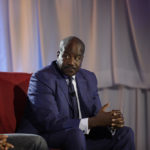 Stress is well known for the harmful effect it has on our health, and CEOs are equally well known to suffer from stress more than most. It perhaps stands to reason, therefore, that the health of CEOs may suffer more than the average worker.
Stress is well known for the harmful effect it has on our health, and CEOs are equally well known to suffer from stress more than most. It perhaps stands to reason, therefore, that the health of CEOs may suffer more than the average worker.
The extent of this impact has been confirmed by a recent Wharton study, which shows that the stress associated with leadership can reduce the life expectancy of CEOs. Indeed, the study found that when anti-takeover laws provided a degree of protection from takeover pressures, the average lifespan of a CEO rose by 2 years, compared to a 1.5-year drop when working through a recession.
Life expectancy
The researchers analyzed over 1,600 bosses of large US firms. For each firm, they assessed any state-level protections offered to buffer against takeovers or industry crises. On average, the bosses in the sample rose to their position by the age of 52, and served for nine years, with the average participant dying by the time they were 83.
“CEOs who serve under stricter governance die significantly earlier,” the researchers write. Every year of less stringent corporate governance reduced mortality rates by up to 5%,” the authors say. “Our findings imply significant health costs of managerial stress, also relative to known health risks.”
While the pandemic obviously placed considerable stress upon many employees, there is perhaps a unique kind of stress on CEOs because of the incentives that often encourage them to continuously work harder and harder.
“When we talk about CEO incentives and more generally employee incentives, we think that incentives are good because they make people work harder, and that’s true,” the researchers say. “As a shareholder, you might like that because that makes your firm more valuable. But from an overall perspective, and specifically from a welfare perspective, there are costs to incentivize. And those costs include the private health costs of your employees. If you make them work harder, they might have systematically worse health outcomes in the future. It’s something to be aware of as a firm designs incentives for its employees.”
Estimating age
To estimate the aging experienced by the CEOs, the researchers used a machine learning technique to assess any visible signs of aging in the various pictures taken of CEOs between the early 2000s and 2018. In total, over 3,000 pictures were included in the analysis, with the pictures taken from Getty Images.
The study period was interesting as it captured both sides of the Great Recession. The authors note that before the recession, there appeared to be a much smaller gap between distressed and non-distressed CEOs, with the gap staying fairly stable. After the recession, however, the apparent age differences became much more noticeable.
A number of states enacted laws to prohibit hostile takeovers of firms, with this appearing to significantly reduce the stress experienced by CEOs. Nonetheless, those CEOs leading during the Great Recession and whose industry suffered from so-called “distress shocks” saw their equity value fall by over 30% in a few years.
“All of us can think of a time when we were very stressed out. I don’t think that was a time when we performed at our best,” the researchers conclude. “Stress not only has long-term effects, but it also affects your immediate productivity – it’s no longer that clear if you’re really performing well if you’re too stressed and burned out. Designing incentives where employees are happy with their work and not always stressed out might not only have long-run health benefits for them, but they might also affect firm value or value creation.”